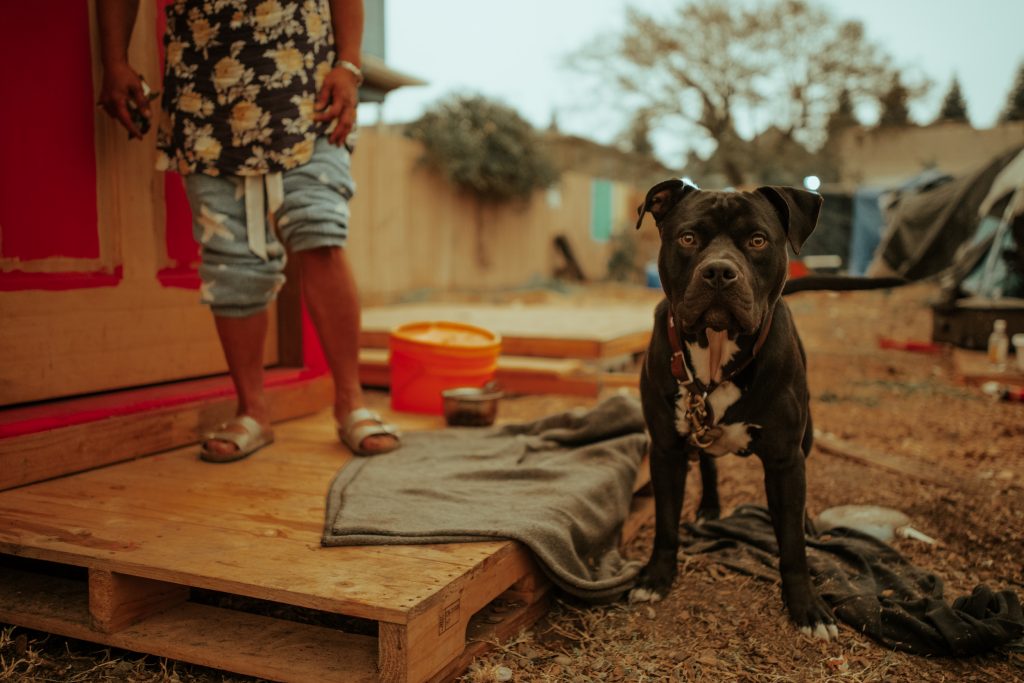
Some-12,000 unsheltered people woke up outside on September 9 to wildfire smoke that had turned the sky orange. For many in the Bay Area, it felt as though the world might end. This came after a week of record-breaking temperatures. From September 5 to 7 the heat soared, hovering in the 90s and even breaking 100 degrees in the normally temperate East Bay—a chilling harbinger of climate change. The orange pall promised to bring bad air quality in the days to come. Indeed, the Air Quality Index in the Bay Area soon broke records as it passed 230—higher than it was in 2018 during the devastating Camp Fire.
While many in the Bay Area choose to hide indoors until conditions improve, the specter of climate change has already arrived for people who live outside. Unsheltered people cannot escape the heat or smoke when fire season sets in, and have already struggled to shelter in place amidst the deadly coronavirus pandemic.
While these issues have a huge, disproportionate influence on unhoused people, they also have far more pressing daily needs created by the conditions of their lives. The coronavirus and climate change were not top of mind for the individuals I spoke to the day the sky turned orange. Instead, many members of the unhoused community were eager to discuss other more immediate concerns such as their health, social relationships, and the threat of being evicted from the encampment communities in which they live.
“We’re okay?,” a 53-year-old unsheltered woman named Roam asked when I arrived at her encampment. I told her yes, we were not in imminent danger. “In that case I love it then, because the heat brings the ants and the flies,” she said, referencing how the smoke had blocked the sunlight, making the temperature cool. “I can cover up in the cold, but I can’t cover up in the heat,” she said.

Roam explained that she had gone the majority of the day without knowing why things looked so strange. Without electricity, she can’t turn on the TV or her phone and watch the news. “I thought it was the end of the world,” she said.
Relieved to hear the world would live to see another day, Roam was much more interested in discussing her bad hip. She has been trying to schedule a replacement for months, and she was finally on a roll with scheduling and attending her doctor’s appointments when the coronavirus pandemic struck.
“I’m starting to lose hope,” she said. “With the COVID it’s like it’s a never, never-ending thing…I feel like it’s not going to go back to normal. That’s where the depression comes from.”
At South Berkeley’s Here/There community camp, the color of the sky seemed to be the last thing on people’s minds. As I started asking what people thought of the strange day, one resident said “I would rather talk about the camp,” explaining that he worried the growth of a nearby encampment was putting pressure on the city to sweep the whole area.
Another resident of the camp, Toan, echoed this tone of non-concern. “For me I feel like this is just another thing that’s happening.” He explained that a number of residents and supporters of Here/There have passed away earlier this year. “Then the virus, and shelter in place, ongoing protest, now fire. A lot of things seem stressful to take in, but this forces us to be in solidarity,” he said. “The homeless get hit the hardest. We feel all the things that are happening directly.”
I hung around the camp a little longer, chatting and asking questions. “Just make sure to get some photos of the garden,” a man named Tim said, gesturing to the flowers and vegetables residents have planted. “Look how nice it looks, all the onions and cucumbers.”




See more photography by Kit Castagne here.
Alastair Boone is the Director of Street Spirit and a beat reporting fellow for KALW covering homelessness.
